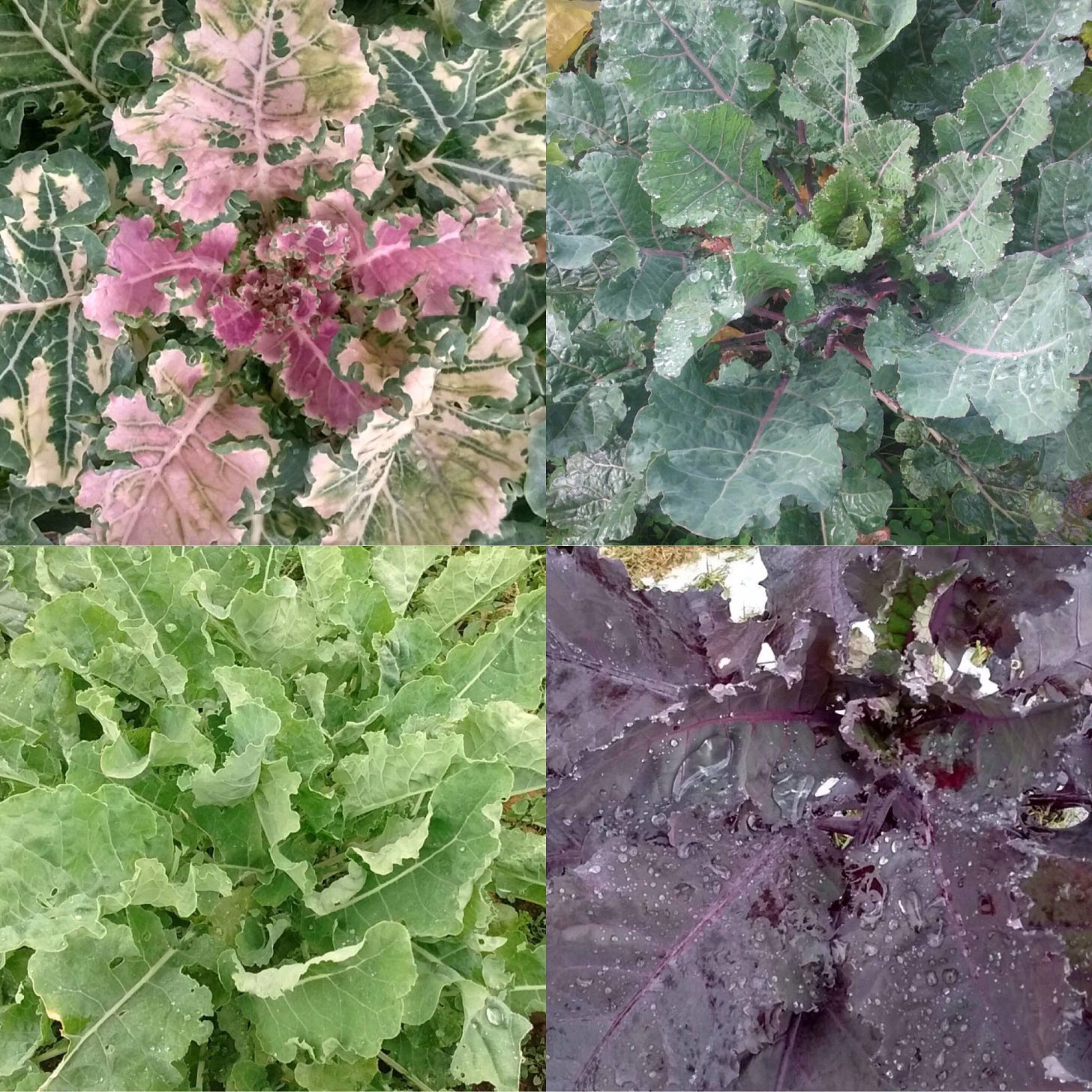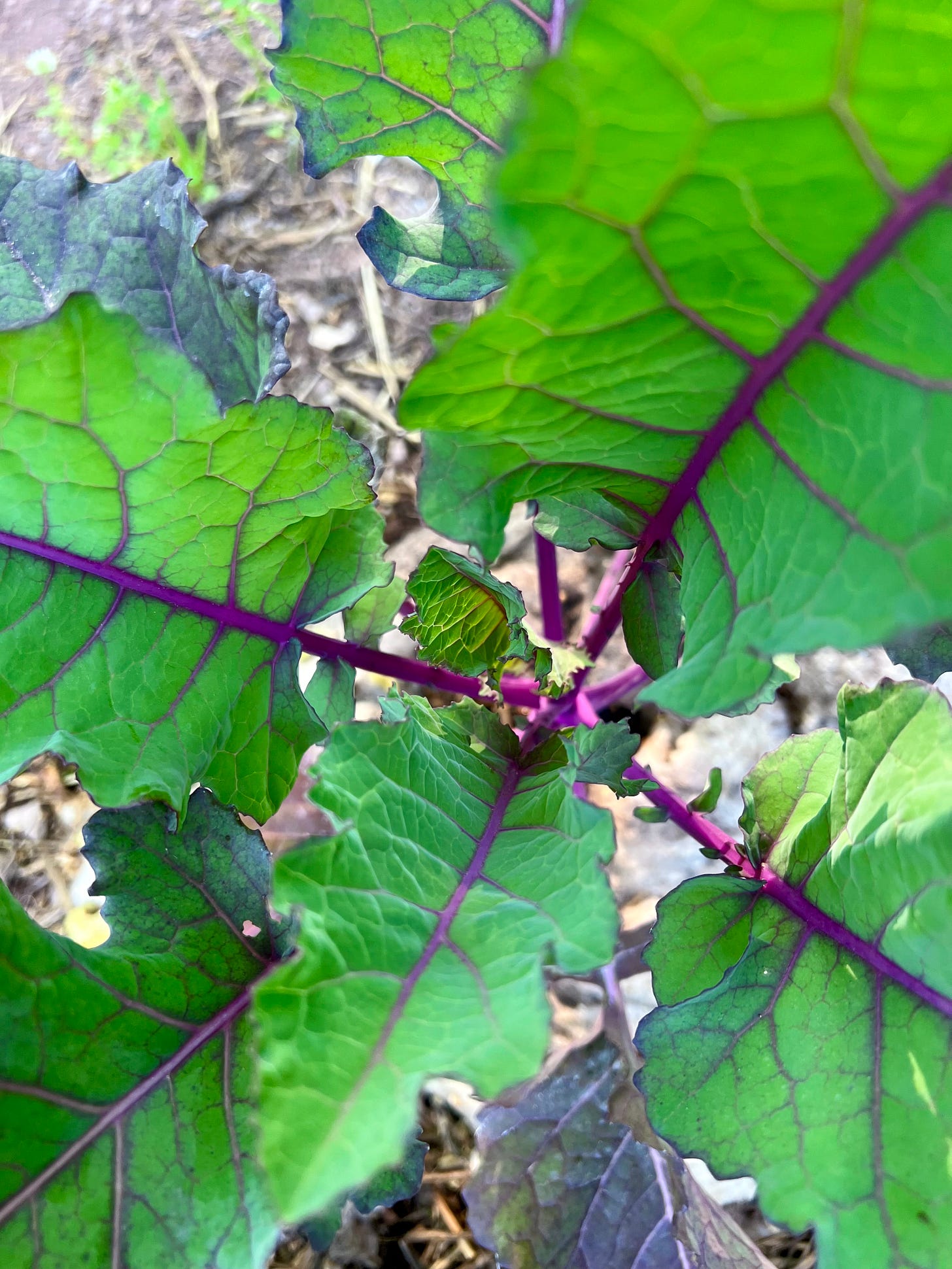Plant Breeding for an Eco-Socialist Future
Organic technology can be our best friend, if we stop commodifying it
Plants are organic technology. They are, of course, much more than just that, but when discussing subsistence, it can be a useful lens to apply. Thinking of plants as tools allows one to focus on creating a well-rounded tool chest: different species and cultivars serve unique functions, fulfilling various needs and providing subsistence in a variety of ways.
In this conception, an improved cultivar represents a technological upgrade: what used be harder is now easier. Plant breeding is technological innovation, allowing a tool to perform a task more successfully or fulfill a new role. A nitrogen fixer adds more nitrogen than it did before, or a plant that used to bear inedible fruit now yields food. These technological improvements have, as a matter of fact, been the most significant in human history: the breeding of edible corn, for instance, had a far greater impact than the invention of computers.
And yet, plant breeding attracts minimal enthusiasm relative to other forms of technology. This can be attributed to our material conditions: we live under capitalism, an economic system that values only profit maximization, and plant breeding is hardly the best way to get rich. Compared to designing brain-deadening phone games, the effort-to-reward ratio is miserable.
Inconveniently for capitalism, however, we cannot eat phone games, and so food continues to be grown and harvested, despite its comparatively paltry return on investment. This is merely a necessary evil for capitalists, who must keep the human labor machine functioning. As such, plant breeding continues apace, directed by the leprotic Invisible Hand of capital, forever manipulating plants to more efficiently convert the Earth into money.
The resulting plants serve this amoral value system: they are better able to withstand bombardment by toxic herbicides; they are more easily harvested by robotic pickers that can't go on strike; they yield food that can survive a precarious global supply chain, and so on.
Occasionally, plants will be lauded by the credulous press for supposedly solving the problems created by capitalism itself. The problem of world hunger—which could, in fact, be solved by redistributing wealth, since we already produce 150% of what we need for everyone—will instead be "solved" by a more productive or nutritious rice variety. These one-weird-trick agricultural solutions are quickly forgotten, but not before they have successfully reinforced the false notion that clever technological tweaks can solve structural problems.
The reality is that they cannot. We will never diffuse the doomsday machine of global capital via technology for the simple reason that there are no technical solutions to the problems of power. Technology can occasionally ease some of the pressure created by the contradictions of capitalism, delaying the ultimate reckoning between opposing forces, but it cannot resolve the tension entirely.
An example is the above mentioned attempts to use plant breeding to solve world hunger. Capitalism cannot exist without inequality, and yet it is well understood that inequality leads to instability—such as hungry people joining disruptive social movements—which threatens capitalism's ability to function. Into this contradiction steps a new breed of rice, which may temporarily ameliorate the problem without addressing its root cause. In the best case scenario, this buys capitalism more time before it destroys the conditions for its own survival—and ours—like a fish in a small pond that eventually chokes on its own shit.
So, what might plant breeding look like if it were oriented toward meeting human needs, rather than the needs of capital? How much better would our lives be if improvements in plant genetics were immediately available far and wide, rather than guarded behind trademarks and licensing agreements? How many thorny problems could be solved by applying the collective strength of the human intellect to making our plants stronger and more versatile?
It’s possible to see the outlines of such a future because there are hints in the present. Some people are breeding plants for reasons better than profit, and the results are quite remarkable.
One notable example is the Experimental Farm Network, a non-profit cooperative. EFN uses an open source, collaborative model for participatory plant breeding, a decentralized approach that harnesses the collective labor and knowledge of a volunteer network. Individuals initiate their own breeding programs, send out seeds to participants, then compile the results.
EFN has made progress on many notable breeding projects, one of which I can speak to directly. I am participating in the perennial kale breeding project, with a slew of these plants started from seed currently scattered across my food forest. Since I am in Zone 5b, I am attempting to stretch the geographic range of the genetic material, which has already shown some promise in my climate but needs confirmation. This coming winter will be a test for my plants: those that survive will move on to the next round, perhaps providing the basis for a new kale variety that will come back year after year.
An example of a centralized approach to the same problem is offered by The Land Institute, a Kansas-based non-profit engaged in a handful of projects to perennialize staple crops. The Land Institute has made remarkable progress on perennializing grains like wheat and sizably improving the yield of existing useful perennials. If successful, such efforts could be on par with the domestication of corn in terms of human impact.
Unlike EFN, The Land Institute is a more traditionally structured and funded institution. Both models have clear advantages and drawbacks, but what they both demonstrate is the desperate need for state support. The work of both groups could easily be wedded to agricultural extension offices and public universities, offering the kinds of funding, expertise, and infrastructure that would inject rocket fuel into their research projects, the results of which could lead to you spending a lot more time eating really good food in a really chill hammock.
Neither organization can move us beyond capitalism, nor can a million more like them. But what they can do is demonstrate the kinds of programs that a post-capitalist state should place at the core of its agricultural sector. The innovative organic technology that both groups create offer real improvements to our well-being without degrading the ecological conditions for our survival.
That is the technological standard an eco-socialist state should seek to promote.
For daily updates, you can follow me on Twitter, Instagram, Bluesky, and Mastodon.






Plant breeding as a form of gradual technological advancement is certainly a possible aveneu that we have neglected over recent centuries.
Selective breeding is good, but do you have any opinions on more direct genetic engineering, ie CRISPR or such? While GMO's have been a magnate for controversy and pseudoscience both pro and against, and a tool of capitalist expansion, modern CRISPR tools, for example, are *very* DIY freindly. I could see it also existing as a fringe niche in an eco-socialist environment, cooking up some of the really weird shit for the good of mankind. Thoughts?
Thank you, I really enjoy how you articulate your ideas and what you choose to dissect in your writing. It really helps to inform my own writing and my work. Also cheers for putting me onto the land institute, incredible work, I’m now curious to see if anything in the same realm is going on in my neck of the world.